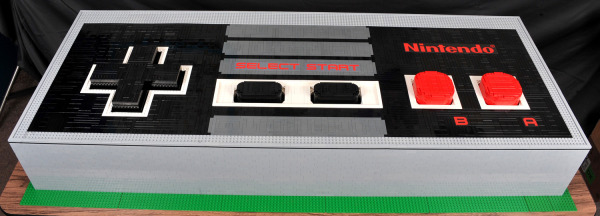Lego Master Builds Giant NES Controller That Actually Works

Ever wondered what to do with a few thousand leftover Lego bricks? New York-based multimedia artist "Baron" Julius von Brunk has made a giant, fully functioning NES controller that actually works with the games system.
 Measuring 5-foot in length, this project came to light in the summer of 2012. And despite delays due to work-related issues, it was finished towards the end of the year, complete with all the electrical elements. Light grey Lego bricks were used to mimic the colour of the NES controller, along with a rather complex construction of inner workings.
Measuring 5-foot in length, this project came to light in the summer of 2012. And despite delays due to work-related issues, it was finished towards the end of the year, complete with all the electrical elements. Light grey Lego bricks were used to mimic the colour of the NES controller, along with a rather complex construction of inner workings.
"Like previous works, I've used custom glossy stickers for the labels. The innards are mainly hollowed with some trusses and support for the buttons; the buttons are spring-loaded modules using Lego Technic pieces to make the large buttons reciprocate when pressed.” Brunk wrote in his Tumblr post, showing insight into the entire process, from even thinking of such a contraption to its final construction.
"Below the large Lego buttons are small momentary push-buttons soldered to the actual circuitry board of an original NES controller, which is then linked to a USB converter to play Nintendo ROMs on my computer. When the large Lego buttons are pressed, the bottoms make contact with the push-buttons, which then send the electrical signal back to the controller's circuit 'brain'; the Lego Technic spring suspension system prevents the large buttons from getting stuck in place."
It now takes pride and place on a table in his attic workshop, ‘building’ (get it?) a true testament to a pioneering game controller.
In-depth details of the controller including imagery, specifications and schematics can be found on his blog.
Zoe Redfern

